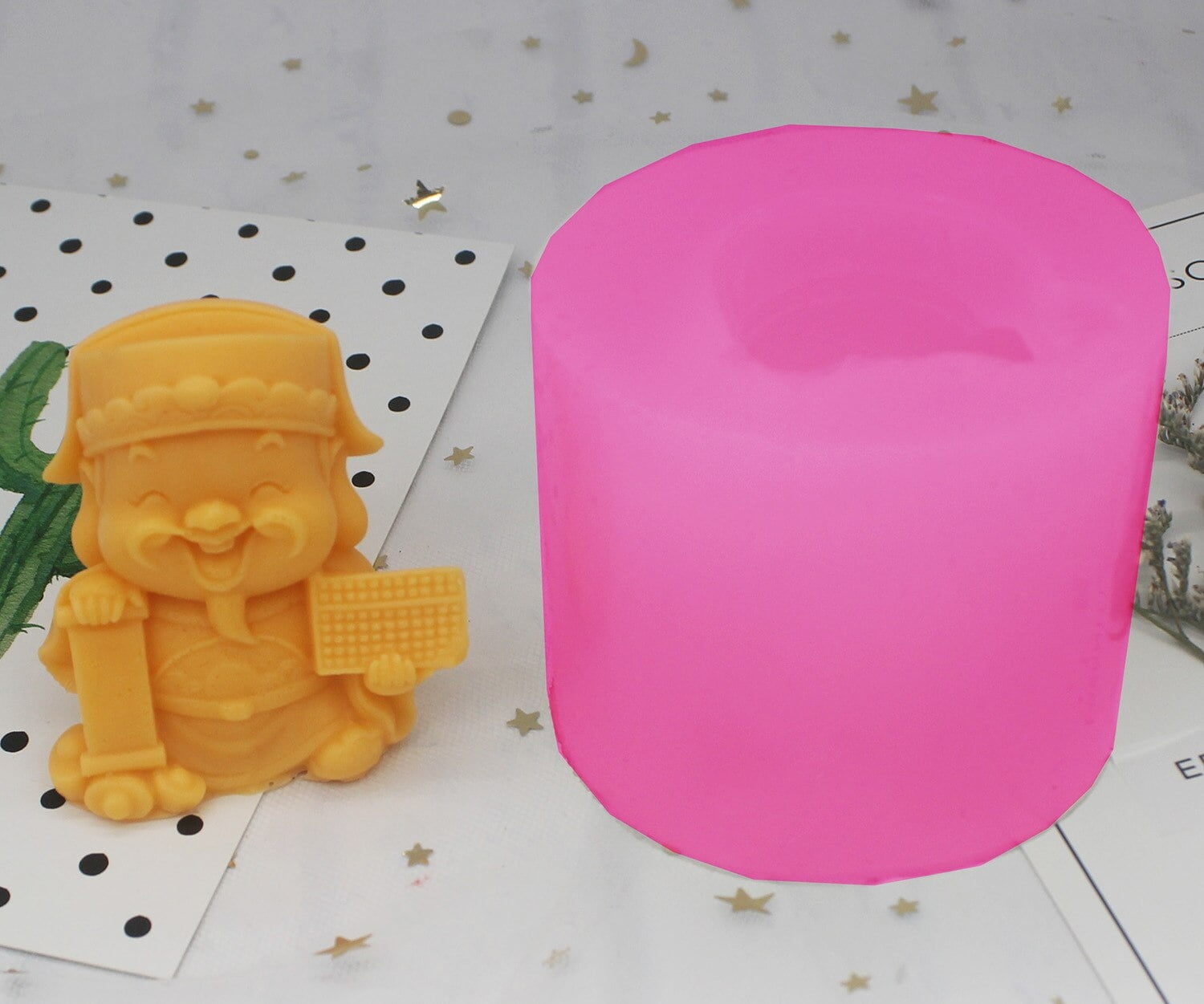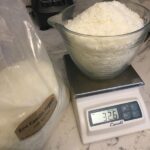How hard is candle making? Many people are often curious about the level of difficulty involved in this craft. Whether you are a beginner or someone looking to improve your candle making skills, it’s essential to understand the basics. From the history of candle making to the necessary tools and materials, this article will provide comprehensive insights into the art of creating beautiful candles.
Candle making has been around for centuries, with early techniques evolving into modern methods. Understanding this evolution can give us a deeper appreciation for the craft and how it has become more accessible to enthusiasts today. In addition to delving into the history of candle making, we will also explore the different types of wax and their impact on the difficulty of creating candles.
For those who are just starting out in candle making, knowing the essential tools and materials required is crucial. This section will provide helpful guidance on what you need to get started and how these items contribute to the overall process of making candles. With a step-by-step guide on how to make your own candles, beginners can gain confidence in their abilities and gradually progress towards more advanced techniques.
A Brief History of Candle Making
Candle making has a long and fascinating history that spans centuries, with early techniques evolving into the modern methods we use today. Understanding the origins of candle making can provide valuable insight into the craft and its significance throughout different cultures and time periods.
1. Early Techniques: In ancient times, candles were typically made from tallow, a form of animal fat, which was melted and poured around a wick to create illumination. These early candles were rudimentary in comparison to the variety of candles available today, but they served an essential purpose in providing light for households, religious ceremonies, and other important functions.
2. Evolution of Methods: Over time, the candle making process evolved as new materials and techniques were discovered. The development of beeswax candles brought about a higher quality of candle due to beeswax’s pleasant aroma and longer burn time. With the advent of industrialization, paraffin wax became a popular choice for candle making due to its affordability and accessibility.
3. Modern Innovations: Today, candle making has been revolutionized by advancements in technology and production methods. Artisans now have access to a wide range of waxes, dyes, scents, and molds to create unique candles that cater to various preferences and styles. Additionally, the introduction of specialized equipment such as double boilers, thermometers, and precise measuring tools has made the process more efficient and precise.
Understanding how far candle making has come from its humble beginnings can provide insight into the significance of this craft in today’s society. It also serves as a reminder that even seemingly simple traditions have been shaped by innovation over time. Learning about the history of candle making can provide a newfound appreciation for the artistry involved in creating these illuminating objects.
The Essential Tools and Materials Required for Candle Making
Candle making is a hobby that can be both enjoyable and rewarding, but it does require the use of specific tools and materials to achieve the best results. Before diving into this craft, it is essential to gather all the necessary supplies to ensure a smooth and successful candle-making process.
Here is a list of essential tools and materials required for candle making:
- Wax: The most fundamental component of any candle, wax comes in various types such as paraffin, soy, beeswax, and gel wax. Each type has its own melting point and characteristics which will affect the final outcome of the candle.
- Wicks: These are the strings placed at the center of the candle that are vital for proper burning. There are different sizes and types of wicks available depending on the size and type of candles you intend to make.
- Fragrance Oils or Essential Oils: If you want scented candles, fragrance oils or essential oils are crucial for adding pleasant aromas to your candles.
- Dyes: To add color to your candles, you will need special dyes that are safe for use in candles.
Step-by-Step Guide on How to Make Your Own Candles
Candle making can seem like a daunting task, especially for beginners. However, with the right tools, materials, and guidance, it can be an enjoyable and rewarding hobby. In this section, we will provide a step-by-step guide on how to make your own candles, breaking down the process into manageable steps for those who are new to this craft.
Gather Your Materials
The first step in making your own candles is to gather all the necessary materials. This includes wax (paraffin, soy, beeswax), wicks, containers or molds, a double boiler or melting pot, a thermometer, fragrance oils (optional), and coloring agents (also optional). It’s important to use high-quality materials to ensure that your candles turn out well.
Melt the Wax
Once you have assembled all your materials, it’s time to melt the wax. Using a double boiler or melting pot, heat the wax to the recommended temperature according to the type of wax you are using. This step requires patience and precision as overheating the wax can affect its quality and performance. Use a thermometer to monitor the temperature throughout the melting process.
Pouring and Setting
After melting the wax and adding any desired fragrance or colorants, it’s time to pour it into your chosen containers or molds. Place the wick in the center of each container and secure it in place with a wick holder. Allow the candles to cool and set for several hours before trimming the wick and enjoying your handmade creations.
Learning how to make candles requires some effort but following these steps can help simplify the process. With practice and experience, you’ll become more comfortable with candle making and may even find it to be a therapeutic and fulfilling activity.
Exploring Different Types of Wax and Their Impact on the Difficulty of Candle Making
When it comes to candle making, one of the key factors that can impact the difficulty of the process is the type of wax used. Different types of wax have different melting points, fragrance capacities, and burn times, which can all affect the overall difficulty level of candle making.
One of the most popular types of wax for candle making is paraffin wax. This type of wax is known for its excellent scent throw and vibrant colors when dyed. However, paraffin wax can be tricky to work with as it has a higher melting point and requires careful monitoring to avoid overheating.
Soy wax, on the other hand, has gained popularity in recent years due to its natural origins and clean burn. Soy wax is generally easier to work with compared to paraffin wax, as it has a lower melting point and is more forgiving for beginners. Beeswax is another natural option that can be more challenging to work with due to its higher melting point and slow cooling time.
In addition to these common types of waxes, there are also blended waxes available that combine different materials to achieve specific characteristics such as better scent throw or improved burning performance. These blended waxes may offer a balance between ease of use and desired candle qualities.
Overall, the choice of wax plays a significant role in how hard candle making can be for beginners. Understanding the characteristics and behavior of different waxes can help aspiring chandlers navigate potential challenges and make informed decisions when starting their candle making journey.
| Type of Wax | Level of Difficulty |
|---|---|
| Paraffin Wax | Higher difficulty due to higher melting point |
| Soy Wax | Lower difficulty due to lower melting point and forgiving nature |
| Beeswax | Moderate difficulty due to higher melting point and slow cooling time |
Common Challenges Faced by Beginners in Candle Making
When first delving into the world of candle making, beginners may encounter several challenges that can make the process seem daunting. From choosing the right materials to mastering the techniques, candle making requires patience and practice. In this section, we will explore some of the common obstacles that beginners face when attempting to create their own candles.
Choosing the Right Wax
One of the first hurdles for novice candle makers is selecting the appropriate type of wax for their project. With a variety of options available, including paraffin, soy, beeswax, and coconut wax, it can be difficult to determine which will work best for a particular candle. Each type of wax has its own unique characteristics and melting points, which can impact the overall difficulty of candle making.
Mastering Fragrance and Color
Adding fragrance and color to candles can enhance their aesthetic appeal and ambiance. However, achieving the perfect scent throw and vibrant hue can be challenging for beginners. Learning how to properly incorporate fragrances and dyes into the wax without affecting its consistency or burning properties requires experimentation and attention to detail.
Achieving Consistent Results
Consistency is key in candle making, but it can be a struggle for newcomers to achieve uniformity in their creations. Factors such as temperature control, pouring technique, and cooling conditions all play a role in determining the final outcome of a candle. Maintaining consistency across multiple batches also adds another layer of complexity to the process.
Overall, while beginner candle makers may encounter various challenges along the way, with dedication and practice, these difficulties can be overcome. As with any craft or hobby, honing one’s skills in candle making takes time and perseverance. The satisfaction of producing a beautifully crafted candle from scratch makes overcoming these challenges worth the effort in the end.
Tips and Tricks for Overcoming Difficulties in Candle Making
Candle making can be both fun and rewarding, but it does come with its fair share of challenges, especially for beginners. However, with the right tips and tricks, these difficulties can be easily overcome. Here are some helpful suggestions to make your candle making experience a lot smoother.
One common challenge in candle making is achieving the perfect fragrance. Sometimes, the scent may not be as strong or long-lasting as desired. To overcome this difficulty, try using high-quality fragrance oils and consider using a fragrance load calculator to ensure you’re adding the right amount of fragrance to your wax.
Another challenge that beginners often face is getting the wick to stay centered while the wax is setting. A helpful tip for overcoming this is to use a wick holder or centering device when pouring the wax into the container. This will keep the wick in place and prevent it from drifting off-center as the wax cools.
Additionally, mastering the art of achieving different colors and textures in candles can be daunting for new candle makers. To overcome this difficulty, experiment with different types of dyes and pigments, and try varying the temperature at which you add them to the wax. This trial-and-error process will help you understand how different factors affect the appearance of your candles.
| Common Difficulty | Tips for Overcoming |
|---|---|
| Achieving perfect fragrance | Use high-quality fragrance oils; use a fragrance load calculator |
| Keeping wick centered | Use a wick holder or centering device when pouring wax into container |
| Achieving different colors/textures | Experiment with different dyes/pigments; vary temperature when adding them to wax |
The Satisfaction of Candle Making
Candle making can be a rewarding and satisfying craft, but many beginners wonder if it’s worth the effort. One of the most fulfilling aspects of candle making is the creative freedom it offers.
From choosing different scents and colors to experimenting with various molds and containers, there are endless possibilities for creating unique and personalized candles. This level of creative control allows crafters to tailor their candles to suit their own preferences or to create one-of-a-kind gifts for friends and family.
Another aspect that adds to the satisfaction of candle making is the sense of accomplishment that comes from creating something with your own hands. As you watch the wax melt, mix in fragrances, and set into its final form, there’s a real sense of pride in seeing a finished product that you made yourself. This feeling is amplified when you light your handmade candle and bask in the warm glow knowing that you created something beautiful from scratch.
Finally, many people find satisfaction in candle making as a way to relax and unwind. The process requires focus and attention to detail, which can be a welcome break from the stresses of daily life. Engaging in a hands-on craft like candle making can be meditative and calming, providing a much-needed escape from the hustle and bustle of everyday responsibilities.
Overall, while candle making may have its challenges, the satisfaction and rewards it offers make it well worth the effort for many enthusiasts. Whether it’s the creative freedom, sense of accomplishment, or simply finding relaxation in the process, candle making can be an incredibly fulfilling hobby for those willing to give it a try.
Conclusion
In conclusion, candle making can be as easy or as difficult as you make it. While there are certainly some challenges that beginners may face, such as achieving the perfect wax consistency or mastering the art of scent blending, with patience and practice, these obstacles can be overcome. The satisfaction of creating something beautiful and functional with your own hands is a reward in itself, and the joy of gifting or using your handmade candles is an added bonus.
The process of candle making also offers a sense of mindfulness and creativity. It provides an opportunity to slow down, focus on the present moment, and unleash your artistic instincts. Whether you choose to make simple container candles or elaborate sculpted designs, the possibilities for personal expression are endless.
So, how hard is candle making? Like any hobby or craft, it requires dedication and a willingness to learn from mistakes. However, the rewards – both tangible and intangible – are well worth the effort. Whether you’re looking for a new creative outlet or hoping to start a small business, candle making can be a fulfilling and enjoyable endeavor for anyone willing to take on the challenge.
Frequently Asked Questions
Is It Difficult to Make a Candle?
Making a candle can be relatively simple or quite complex, depending on the type of candle you want to create. Basic candle-making with simple materials like wax, wick, and fragrance can be an easy and enjoyable DIY project.
How Profitable Is Candle-Making?
Candle-making can be profitable if done as a business, especially with the growing demand for unique, artisanal candles. With the right marketing and product quality, it’s possible to generate a good income from selling homemade candles.
Is Making Your Own Candle Easy?
Making your own candle can be easy with the right guidance and materials. There are plenty of resources available, such as tutorials and kits, that provide step-by-step instructions for beginners to create their own beautiful candles at home.

Welcome to my candle making blog! In this blog, I will be sharing my tips and tricks for making candles. I will also be sharing some of my favorite recipes.





